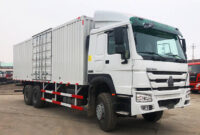Bale Bed Trucks For Sale Near Me: Your Comprehensive Guide to Efficient Hay Handling pickup.truckstrend.com
In the demanding world of agriculture, efficiency is paramount. For ranchers, farmers, and livestock operators, managing hay bales efficiently can significantly impact profitability, labor costs, and overall productivity. This is where the unsung hero of the farm, the bale bed truck, steps in. A specialized vehicle designed to effortlessly pick up, transport, and unroll large hay bales, a bale bed truck transforms a labor-intensive, often multi-person task into a swift, single-operator operation.
Searching for "Bale Bed Trucks For Sale Near Me" isn’t just about convenience; it’s about finding the right tool for your specific needs, inspecting it firsthand, and ensuring local support or transport logistics. This comprehensive guide will delve into everything you need to know about bale bed trucks, from their core functionality to essential buying tips, helping you make an informed decision and locate the perfect rig for your operation.
Bale Bed Trucks For Sale Near Me: Your Comprehensive Guide to Efficient Hay Handling
What Exactly is a Bale Bed Truck?
At its core, a bale bed truck is a standard pickup truck chassis (typically a 3/4-ton or 1-ton, often a dually) that has been fitted with a specialized flatbed equipped with a hydraulic system designed specifically for handling hay bales. Unlike a simple flatbed or a truck with a front-end loader, a bale bed integrates the lifting and transporting mechanism directly onto the truck’s bed, allowing for seamless operation.
Key components of a bale bed include:
- Hydraulic Arms/Spears/Squeezes: These are the primary mechanisms for engaging with the bale. They can be single spears that pierce the bale, double spears for added stability, or hydraulic squeezes that grip the bale from the sides.
- Hydraulic Pump and Reservoir: Powers the arms and other hydraulic functions, typically driven by the truck’s engine.
- Controls: Located in the cab, these joysticks or levers allow the operator to precisely maneuver the bale.
- Flatbed Surface: Provides a stable platform for carrying one or more bales.
- Optional Features: Many bale beds include integrated gooseneck hitches for pulling livestock or hay trailers, and some feature "spinners" or "dump beds" that allow the operator to unroll round bales for feeding livestock.

Bale bed trucks are primarily designed for round bales, which can weigh anywhere from 800 to over 2,000 pounds. However, some larger models or those with specific attachments can also handle large square bales, making them incredibly versatile for various haying operations.
The Benefits of Owning a Bale Bed Truck
Investing in a bale bed truck offers a multitude of advantages that can significantly boost your agricultural operation’s efficiency and safety:
- Unparalleled Efficiency: A single operator can load, transport, and unload numerous bales in a fraction of the time it would take with a tractor and loader. This speed is crucial during busy haying seasons or daily feeding routines.
- Significant Labor Savings: What once required multiple people and pieces of equipment can now be handled by one individual. This dramatically reduces labor costs and the physical strain on your workforce.
- Enhanced Safety: Moving heavy bales with a front-end loader on a tractor can be precarious, especially on uneven terrain. Bale bed trucks offer a lower center of gravity and more stable operation, reducing the risk of rollovers or accidents. The operator remains safely in the cab throughout the loading and unloading process.
- Versatility Beyond Bales: When not moving hay, the flatbed nature of these trucks allows them to function as general utility vehicles, capable of hauling fencing materials, tools, feed bags, or even functioning as a mobile workstation. Many also have integrated gooseneck hitches, making them ideal for towing trailers.
- Reduced Hay Waste: For models equipped with spinners, hay can be unrolled precisely where needed, minimizing spoilage and ensuring even distribution for livestock, leading to better feed utilization.
- Long-Term Cost-Effectiveness: While the initial investment might seem substantial, the savings in labor, fuel (compared to running multiple machines), and increased productivity quickly offset the cost over the lifespan of the truck. Less wear and tear on other equipment (like tractors) also contributes to overall savings.

Key Features and Types of Bale Bed Trucks
Understanding the different features and configurations available is crucial when searching for a bale bed truck:
- Hydraulic System Strength: Look for robust hydraulic pumps and cylinders. The pressure and flow rate determine how quickly and powerfully the arms operate. Inspect for leaks or sluggish movement.
- Arm Configurations:
- Spear Beds: Use one or two pointed spears that penetrate the bale. Simple, effective, and generally less expensive. Best for round bales.
- Squeeze Beds: Use hydraulic arms that "squeeze" the bale from the sides, offering a more secure grip and less damage to the bale. More versatile for various bale types and conditions.
- Combined Systems: Some beds offer both spear and squeeze capabilities.
- Spinners/Unrollers: Essential for unrolling round bales for feeding. They allow the bale to be slowly spun off the back of the truck, distributing hay along a feeding line.
- Gooseneck Hitch Integration: Most modern bale beds come with an integrated gooseneck hitch, allowing you to pull a large trailer without needing a separate hitch installation. This enhances the truck’s utility.
- Chassis Type and Drivetrain:
- 3/4-ton vs. 1-ton: 1-ton trucks (like Ford F-350/450, Ram 3500/4500, Chevy/GMC 3500/4500) are generally preferred due to their higher payload capacity and stronger suspension, especially for larger bales or multiple bales.
- Dually vs. Single Rear Wheel (SRW): Dually trucks (with four rear wheels) offer superior stability and weight distribution for heavy loads, making them the preferred choice for dedicated bale handling.
- 4×4 vs. 2×4: If you operate on uneven terrain, muddy pastures, or during inclement weather, a 4×4 system is invaluable for traction and accessibility.
- New vs. Used:
- New: Offers the latest technology, full warranty, and customization options. Higher initial cost.
- Used: More budget-friendly, often readily available. Requires thorough inspection and due diligence. Excellent value can be found if you know what to look for.
Finding Bale Bed Trucks For Sale Near You
The "near me" aspect is critical for inspecting the vehicle, saving on transport costs, and potentially having local service options. Here’s where to look:
- Online Marketplaces (National & Local):
- TruckPaper.com, TractorHouse.com, EquipmentTrader.com: Major national platforms for heavy equipment and farm machinery. Use their "distance" or "zip code" filters.
- Facebook Marketplace: Excellent for local finds, often from individual sellers. Search "bale bed," "hay bed," or "truck with bale bed."
- Craigslist: Local classifieds. Be cautious and always meet in a public place.
- eBay Motors: Can find both local and distant listings.
- Local Farm & Ranch Forums/Groups: Many regions have dedicated online communities where equipment is bought and sold.
- Agricultural Dealerships:
- New Equipment Dealers: Brands like CM Truck Beds, Bradford Built, Hillsboro, Harper, and others have dealer networks. Search for authorized dealers in your area. They may also have trade-ins.
- Used Farm Equipment Dealers: Many dealerships specialize in used farm machinery and often stock bale bed trucks.
- Local Farm Auctions: Attending local farm auctions can yield great deals, but be prepared to buy "as-is" and inspect thoroughly beforehand. Online auction sites like Proxibid or BigIron often list farm equipment.
- Word of Mouth & Local Classifieds: Don’t underestimate the power of community. Ask fellow farmers, check bulletin boards at co-ops or feed stores, and peruse local agricultural newspapers.
Tips for "Near Me" Searches:
- Refine your search: Use specific keywords like "bale bed truck F350," "hay bed Ram 3500," or "hydraulic bale bed."
- Set a radius: Most online platforms allow you to set a search radius (e.g., 50 miles, 100 miles).
- Call ahead: If you find a promising listing, call the seller or dealer to confirm availability and set up an inspection time.
What to Inspect Before Buying a Used Bale Bed Truck
Buying used can save you a significant amount, but it requires meticulous inspection. A well-maintained used bale bed can be an excellent investment, but a neglected one can quickly become a money pit.
- Hydraulic System:
- Leaks: Check all hoses, cylinders, and the pump for any signs of hydraulic fluid leaks.
- Operation: Run the hydraulic arms through their full range of motion. Are they smooth and responsive, or do they stutter, groan, or operate slowly?
- Cylinders: Look for rust, pitting, or damage on the chrome rods of the cylinders.
- Pump: Listen for unusual noises from the hydraulic pump.
- Bale Bed Structure:
- Welds: Inspect all welds for cracks, particularly at stress points where the bed attaches to the frame or where the arms pivot.
- Rust: Surface rust is common, but significant rust or rot on the frame, crossmembers, or bed sheeting can indicate structural weakness.
- Straightness: Is the bed straight and level? Any twisting or sagging could indicate a past overload or structural issue.
- Pins and Bushings: Check the pivot points for excessive wear or play. Worn pins and bushings can lead to sloppy operation and require costly replacement.
- Truck Chassis and Drivetrain:
- Engine: Listen for unusual noises, check fluid levels, and look for leaks. Ensure it starts easily.
- Transmission: Test all gears, ensuring smooth shifts.
- Tires: Check tread depth and overall condition, especially on dually rear tires. Uneven wear can indicate alignment issues.
- Brakes: Test them thoroughly.
- Frame: Inspect the truck’s main frame for cracks, bends, or severe rust.
- Electrical System: Test all lights, gauges, and the bale bed controls in the cab.
- Test Drive and Operate:
- Always test drive the truck. Pay attention to handling, braking, and engine performance.
- If possible, operate the bale bed with a bale. This is the ultimate test of its functionality under load.
- Maintenance Records: Ask the seller for maintenance records for both the truck and the bale bed. This can provide valuable insight into how well the unit has been cared for.
- Seller Reputation: If buying from an individual, try to gauge their honesty and willingness to answer questions. If buying from a dealer, check their reviews.
Pricing Considerations and Value
The price of a bale bed truck can vary significantly based on several factors:
- Age and Mileage: Newer trucks with lower mileage command higher prices.
- Condition: A well-maintained truck in excellent condition will fetch more than one with obvious wear and tear.
- Brand and Features: Premium bale bed brands or trucks with advanced features (e.g., remote control, heavy-duty squeezes, integrated scales) will be more expensive.
- New vs. Used: As expected, new units are substantially more expensive than used ones.
- Market Demand: Prices can fluctuate based on regional demand and the time of year (e.g., higher demand during haying season).
Estimated Price Ranges (Highly Variable):
| Type of Bale Bed Truck | Condition/Key Features | Estimated Price Range (USD) | Notes |
|---|---|---|---|
| Used – Older Model | 2000s-early 2010s, high mileage, basic bale bed | $15,000 – $30,000 | Functional, but may require some immediate maintenance. Good for smaller operations or as a secondary truck. |
| Used – Mid-Range | Mid-2010s, moderate mileage, good condition, some features (e.g., spinner) | $30,000 – $60,000 | Solid workhorse, well-maintained, offers good value. Most common segment for serious buyers. |
| Used – Late Model/Premium | Late 2010s-early 2020s, low mileage, excellent condition, advanced features (squeezes, remote) | $60,000 – $90,000+ | Near-new performance without the full new price tag. Excellent choice for high-volume operations. |
| New Bale Bed (Installed on New Chassis) | Latest model truck and bale bed, full warranty, customizable | $100,000 – $150,000+ | Top-tier performance and reliability. Significant investment, but offers peace of mind and long-term service. Price varies greatly by truck and bed specifications. |
| Bale Bed Only (Used) | For installation on your existing truck chassis | $5,000 – $15,000+ | Price depends on age, brand, features, and condition. Installation costs are separate. |
Note: These are highly generalized estimates and actual prices can vary significantly based on location, specific truck model, engine type (diesel often higher), market conditions, and the seller’s urgency. Always do your own research and compare multiple listings.
Tips for a Successful Purchase
- Define Your Needs: How many bales do you move daily? What size? What terrain? Do you need a spinner? A gooseneck hitch? This will narrow your search.
- Set a Realistic Budget: Include not just the purchase price, but also potential repair costs for used units, fuel, insurance, and registration.
- Be Patient: Don’t jump on the first truck you see. The right deal often takes time to find.
- Bring an Expert: If you’re not mechanically inclined, bring a trusted mechanic or an experienced farmer with you to inspect the truck.
- Negotiate: Always be prepared to negotiate the price, especially on used equipment.
- Verify Documentation: Ensure the title is clear and matches the VIN.
- Consider Shipping vs. Driving: If you buy from a distance, factor in the cost and logistics of transport. This is where "near me" truly shines.
Frequently Asked Questions (FAQ) About Bale Bed Trucks
Q1: How much does a bale bed truck cost?
A1: As detailed in the pricing table above, prices vary widely. Used models can range from $15,000 to $90,000+, while a new bale bed on a new truck chassis can easily exceed $100,000. The cost depends on age, condition, features, and the truck’s specifications.
Q2: Can I put a bale bed on any truck?
A2: No. Bale beds are heavy and designed for heavy-duty truck chassis, typically 3/4-ton or 1-ton (F-250/350, Ram 2500/3500, Silverado/Sierra 2500/3500). A dually (dual rear wheels) is highly recommended for stability and weight capacity. The truck must have a robust frame and adequate Gross Vehicle Weight Rating (GVWR).
Q3: What’s the difference between a bale spear and a bale squeeze?
A3: A bale spear uses one or two pointed prongs that pierce the hay bale to lift it. They are simpler and often less expensive. A bale squeeze uses hydraulic arms that grip the bale from the sides, similar to tongs. Squeezes offer a more secure hold, are less damaging to the bale, and can often handle slightly irregular bale shapes better.
Q4: Is it better to buy a new or used bale bed truck?
A4: This depends on your budget and needs. New trucks offer reliability, warranty, and the latest features but come at a premium. Used trucks offer significant cost savings but require thorough inspection and may incur more maintenance. For many operations, a well-maintained used truck offers the best value.
Q5: What kind of maintenance do bale beds require?
A5: Regular maintenance includes checking hydraulic fluid levels, inspecting hoses for leaks, greasing pivot points and moving parts, checking electrical connections, and inspecting welds for cracks. The truck chassis itself requires standard vehicle maintenance (oil changes, tire rotations, brake checks, etc.).
Q6: Can a bale bed truck handle square bales?
A6: Most bale beds are optimized for round bales. However, some models, particularly those with hydraulic squeeze arms, can be adapted or specifically designed to handle large square bales. Always confirm the bale bed’s specifications if square bale handling is a primary need.
Conclusion
A bale bed truck is more than just a piece of farm equipment; it’s a strategic investment that can revolutionize your hay handling process, saving you time, labor, and ultimately, money. When searching for "Bale Bed Trucks For Sale Near Me," remember that proximity offers tangible benefits for inspection and logistics. By understanding the types, features, and crucial inspection points, you can confidently navigate the market and find a reliable, efficient workhorse that will serve your agricultural operation for years to come. Do your research, inspect thoroughly, and choose wisely – your back, and your bottom line, will thank you.




